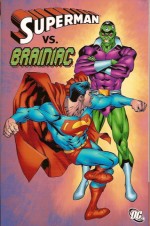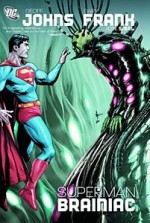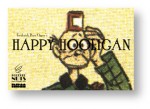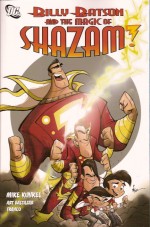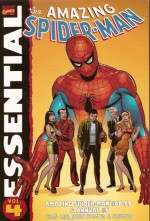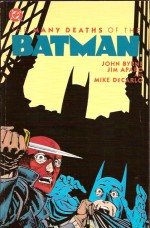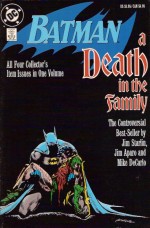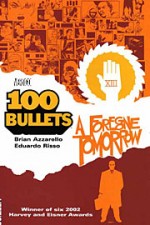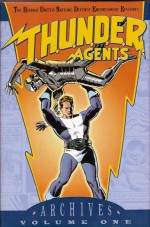
By Wally Wood & various (DC Comics)
ISBN: 1-56389-903-5
The history of Wally Wood’s immortal comics masterpiece is convoluted, and once the mayfly-like lifetime of the Tower Comics line ended, not especially pretty: wrapped up in legal wrangling and not a little petty back-biting, but that doesn’t diminish the fact that the far-too brief careers of The Higher United Nations Defense Enforcement Reserves was a benchmark of quality and sheer bravura fun for fans of both the still-reawakening superhero genre and the popular media’s spy-chic obsession.
In the early 1960s the Bond movie franchise was going from strength to strength, with action and glamour utterly transforming the formerly understated espionage vehicle. The buzz was infectious: soon Men like Flint and Matt Helm were carving out their own piece of the action as television shanghaied the entire bandwagon with the irresistible Man From U.N.C.L.E. (premiering in September 1964), bringing the whole genre inescapably into living rooms across the world.
Wildly creative maverick Wally Wood was approached by veteran MLJ/Archie Comics editor Harry Shorten to create a line of characters for a new distribution-chain funded publishing outfit – Tower Comics. Woody called on some of the biggest names in the industry to produce material in the broad range of genres the company wanted (as well as T.H.U.N.D.E.R. Agents and its spin-offs Undersea Agent, Dynamo and NoMan there was the magnificent war-comic Fight the Enemy and the youth-comedy Tippy Teen).
Samm Schwartz and Dan DeCarlo handled the funny book – which outlasted all the others – whilst Wood, Larry Ivie, Len Brown, Bill Pearson, Steve Skeates, Dan Adkins, Russ Jones Gil Kane and Ralph Reese all contributed scripts for themselves and the industry’s top talents to illustrate on the adventure series.
With such a ravenous public appetite for super-spies and costumed heroes steadily rising in comic-book popularity the idea of blending the two concepts seems a no-brainer now, but those were far more conservative times, so when T.H.U.N.D.E.R. Agents #1 appeared with no fanfare or pre-publicity on newsstands in August 1965 (with a cover off-sale date of November) thrill-hungry readers like little me were blown away. It didn’t hurt either that all Tower titles were in the beloved-but-rarely-seen 80 Page Giant format: there was a huge amount to read in every issue!
All that being said the tales would not be so beloved of we baby-boomer fans if they hadn’t been so superbly crafted. As well as Wood, the art accompanying the compelling, far more mature stories was by some of the greatest talents in comics: Reed Crandall, Gil Kane, George Tuska, Mike Sekowsky, Dick Ayers, Joe Orlando, Frank Giacoia, John Giunta, Steve Ditko and others.
This initial lush and lustrous compilation collects issues #1-4 and covers the first golden year of the series. It all starts with a simple four page tale ‘First Encounter’ by Ivie & Wood, wherein UN commandos failed to save brilliant scientist Professor Emil Jennings from the attack of the mysterious Warlord, but at least rescued some of his greatest inventions, including a belt that can increase the density of the wearer’s body until it becomes as hard as steel, a cloak of invisibility and an enigmatic brain-amplifier helmet.
These prototypes were to be divided between several agents to create a unit of superior fighting men and counter the increasingly bold attacks of many global terror threats such as the aforementioned Warlord.
First chosen was affable file clerk Len Brown who was, to everyone’s surprise, assigned the belt and the codename Dynamo in a delightfully light-hearted adventure ‘Menace of the Iron Fog’ (written by Len Brown, who had no idea illustrator/editor Wood had prankishly changed the hero’s civilian name as a last-minute gag) which gloriously pandered to every kid’s dream as the nice guy got the power to smash stuff. This cathartic fun-fest also introduced the Iron Maiden, a sultry villainess clad in figure-hugging steel who was the probable puberty trigger for an entire generation of boys…
‘T.H.U.N.D.E.R. Agent NoMan’ came next, the eerie saga of aged Dr. Anthony Dunn who chose to have his mind transferred into a specialised android body, then equipped with the invisibility cape. The author’s name is unknown but the incredible Reed Crandall (with supplemental Wood inks) drew the first episode which also found time and space to include a captivating clash with sinister mastermind Demo and his sultry associate Satana who had unleashed a wave of bestial sub-men on a modern metropolis. NoMan had one final advantage: if his artificial body was destroyed his consciousness could transfer to another android body. As long as he had a spare ready, he could never die…
Larry Ivie filled in some useful background on the war against the Warlord in the prose adventure ‘Face to Face’ before the third agent was chosen in ‘The Enemy Within’ (also with no script credit and illustrated by Gil Kane, Mike Esposito and George Tuska). However here is where the creators stepped well outside the comic-book conventions. John Janus was the perfect UN employee: a mental and physical marvel who easily passed all the tests necessary to wear the Jennings helmet. Sadly he was also a deep cover mole for the Warlord, poised to betray T.H.U.N.D.E.R. at the earliest opportunity…
All plans went awry once he donned the helmet and became Menthor. The device awakened the potential of his mind, granting him telepathy, telekinesis and mid-reading powers – and also drove all evil from his mind whilst he wore it. When the warlord attacked with a small army and a giant monster, Menthor was compelled by his own costume to defeat the assault. What a dilemma for a traitor to be in…
‘T.H.U.N.D.E.R. Squad’ by Ivie, Mike Sekowsky & Frank Giacoia, is a rip-roaring yarn featuring an elite team of non-powered specialist operatives – which predated TV’s Mission: Impossible outfit by almost two years – who tackled cases the super-agents were too busy or unsuited for. In this initial outing the Squad rushed to defend their Weapons Development Center from a full paramilitary assault only to discover that it’s a feint and Dynamo had been captured by the Warlord…
The first issue ended with a big old-fashioned team-up as all the forces of T.H.U.N.D.E.R. converged to rescue their prime agent who was ‘At the Mercy of the Iron Maiden’ (by Brown, Wood & Dan Adkins) a spectacular battle blockbuster that still takes the breath away…
Issue #2 led again with their strongman star when ‘Dynamo Battles Dynavac’ (Brown, Wood & Richard Bassford) another colossal combat classic as the hapless hero got a severe kicking from a deadly automaton. Once again a narrative thread stretched through the disparate tales as the hero’s girlfriend and fellow agent Alice was kidnapped…
NoMan was ‘In the Warlord’s Power’ (Bill Pearson, Dick Ayers, Joe Orlando and Wood) when an army of Zombie-men attacked a Missile Base and Menthor again defied his master to defeat a Warlord scheme to destroy T.H.U.N.D.E.R. HQ (again no script credit but amazingly illustrated by Sekowsky & Giacoia) before ‘D-Day for Dynamo’ (with art from Wood, Adkins & Tony Coleman) pitted the assembled heroes, reunited to rescue Alice, against Demo, the Dynavac and the Warlord in an all-out war with atomic consequences.
The series took a fantastic turn as the Warlord was revealed to be an agent of a subterranean race of conquerors, but before that the second issue still held another prose piece, ‘Junior T.H.U.N.D.E.R. Agents’, whilst the T.H.U.N.D.E.R. Squad responded ‘On the Double’ to a South American crisis, involving mutant monsters, Communist insurgents and bloody revolution in a classy thriller illustrated t Sekowsky/Giacoia team.
‘Dynamo Battles the Subterraneans’ drawn by Adkins, Wood & Coleman opened the third issue, as the Warlord’s macabre mole-men masters attacked Washington DC, whilst
‘NoMan Faces the Threat of the Amazing Vibraman’ (Pearson, John Giunta, Wood & Coleman) saw a far more plebian but no less deadly menace ended by the undying agent, before Dynamo almost became a propaganda victim of Communist agitator ‘The Red Dragon’ (Adkins, Wood & Coleman) and the T.H.U.N.D.E.R. Squad battled a madman who manufactured his own ‘Invaders from the Deep’ (another uncredited script pictured by Sekowsky & Giacoia) before the main event ‘Dynamo vs. Menthor’ (Wood, Adkins & Coleman) posed a terrifying mystery as a trusted agent almost destroyed the entire organisation. With captivating pin-ups by Wood & Adkins featuring Dynamo, NoMan, the Thunderbelt, T.H.U.N.D.E.R. Squad and Menthor the visual excitement in this issue is beyond price.
The Dynamo tale ‘Master of Evolution’ (written by Brown, illustrated by Wood, Adkins & Coleman) opened the fourth issue with a dinosaur bashing extravaganza, whilst the fiendish Mastermind arrayed his own android armies against the Artificial Agent in ‘The Synthetic Stand-Ins’ by Steve Skeates, Sekowsky & Giacoia, and the same art team debuted the latest super-agent in the T.H.U.N.D.E.R. Squad saga ‘The Deadly Dust’ wherein a Nazi scientist used his time-retarding dust for evil and the heroes responded with a super-speed suit. This first case for hyper-fast Lightning was followed by a Dynamo milestone ‘The Return of the Iron Maiden’ (drawn by Crandall, Wood & Adkins) which saw the Armoured Amorata betray her latest employer Dr. Death for the man sent to arrest her.
Finally the mystery of Menthor was partially resolved in the fast-paced thriller ‘The Great Hypno’ (illustrated by Giunta, Wood & Coleman), and of course there were more fantastic art extras in the form of NoMan and The Origin of T.H.U.N.D.E.R. pin-up pages.
These are truly timeless comic tales that improve with every reading, and there’s never been a better time to add these landmark superhero sagas to your collection of favourites.
© 1965 John Carbonaro. All rights reserved. This edition © 2002 DC Comics.


